With summer now in full swing, I plan on switching over to fishing from my boat a heck of a lot more. In most areas on Cape Cod, big striped bass will become more challenging to find and catch from shore during the heat of summer. To get a real good bass in the heat, your best chance will be via boat.
In this post I will share with you 10 ways to catch a cow striper on the tube and worm, which have worked for me since I was a little kid, trolling tubes from a 12 foot tin boat with my Dad.
If you are looking to catch your first keeper striper this season from your boat, or if you are just hoping to glean some tube and worm information, then I feel this post will be extremely valuable to you.
1) Use A Real Seaworm On The Tube, Instead Of The Plastic Scented Seaworms
Plastic scented seaworms do work when trolled on tubes. However after a lot of experimenting over the years I feel it pays to cough up the $6 per dozen for the actual, real live seaworms.
One thing I have noticed, which happens much more frequently when trolling with fake plastic seaworms, is that big bass whack the tube, but do not get the hook. With live seaworms stripers inhale the worm and try to swallow it, resulting in a much better hookup ratio.
2) Use A Rod With Good Backbone, And A Soft Tip
Since it is very possible to catch a 50 pound bass while trolling the tube and worm off Cape Cod, I would definitely recommend choosing a rod that has plenty of backbone. This is especially true if you are trolling tubes in rocky areas.
Yet you also want a rod that has a soft tip, because often times the hook sets are not great when tube and worm trolling. When the bass is shaking its head at the side of the boat, a soft rod tip will help diminish the amount of popped hooks.
3) Keep The Trolling Speed Between 1.5 – 2.5 MPH
I feel that the tube and worm most likely imitates a large seaworm, squirming slowly through the water. Seaworms don’t travel fast so I would definitely recommend keeping your trolling speed slow, somewhere between 1.5 and 2.5 MPH.
If your boat cannot go this slow, then try dragging a pair of 5 gallon buckets off the stern. I’ve seen larger boats use a drift sock off the stern as well to help slow them down.
4) When In Doubt, Go With Red
When I was working at a bait shop as a teenager, we only sold red, orange and black tubes. Now if you go to purchase a tube, you’ll see some wild colors like green, purple and pink.
When in doubt, I say go with a red tube. I can’t think of a situation in which the boat next to me was hooking up on pink, and I was not able to hook up on red. Same goes with all the other crazy and wild colors.
I”m sure the whacky colors have their place, but I feel you will have your best chance sticking to the traditional colors that have worked for decades.
5) If You’re Running Low On Worms, Then A Half Or Quarter Of A Worm Will Still Work
With regards to the seaworm, I feel the most important thing is to make sure there is at least a small bit of worm on the hook to provide the bass with some scent to zone in on.
Without the worm, bass may whack the top or middle of the tube, so you need at least some worm on the hook in order to get a good hook set.
A nice big, fat, juicy seaworm is ideal, but in many cases a 3 inch long section of seaworm will get the job done.
6) Troll With The Tide, Waves, Breeze And Current
Not only is trolling into the tide, waves, breeze and current difficult, but it messes up the presentation of the tube. Odds are the tube will be corkscrewing at a rapid pace, the boat will be bouncing all over the place, and you might not make any headway at all.
Instead I prefer to motor upcurrent, uptide or upwind and troll with the natural movement of the water. One would imagine that if the tube and worm does imitate a large seaworm, then said seaworm would be swimming with the tide, breeze and current as well.
7) Be Sure To Precisely Control The Depth At Which You Are Trolling
When bass are finicky on those hot summer afternoons, the depth at which you troll your tube can have a big impact. Even adjusting the depth by a mere yard or two, can make a big difference.
I prefer leadcore line because controlling depth is simple and easy. Other guys will use weight, downriggers or wire. Whatever route you choose, just be sure you can accurately determine the depth at which you are trolling.
8) Hold Onto Those “Magic” Tubes And Protect Them With Your Life!
Ever since I began trolling tubes I have noticed that certain tubes catch all the fish. I may be trolling 2 identical tubes, however 1 of the tubes generates 90% of the bites.
It has to have something to do with the action of the tube. Perhaps these “magic” tubes corkscrew just the right way to entice a bite.
Whatever it is, once you identify that a particular tube on your boat is catching all the fish, be sure to protect that tube with your life! Retie knots, check for fray on the leader…do whatever you can to hold onto that tube, because for whatever reason that is the tube the bass want to eat.
9) Set Your Drag Tight Enough For The Strike
When trolling tubes the forward motion of the boat, coupled with the movement of the fish, is what sets the hook. There’s no need to yank the rod from the rod holder and set the hook, like you would if you were fishing for largemouth bass with a jig.
Just make sure your drag is set tight enough to get a good hook set. I believe I keep mine set to around 8 pounds for the strike, but I would have to double check on that.
What you definitely do not want to do is not have enough drag for the strike, because you’ll never get a good hook set, and will be continually popping off fish.
10) If Using Weighted Tubes, Let Them Out Slowly, And Check To Make Sure They Are “Swimming” Properly
The problem with using tubes that have an egg sinker embedded in the front of them, is that when let out behind the boat too quickly, the tube will often curl up on itself and hook itself into a circle. The tube will be fouled up, and if you don’t notice this, you may spend an hour or more trolling a fouled up tube.
To avoid this, let weighted tubes out very slowly and do not let them drop through the water column at a rapid pace. Once you have the tube set, check to make sure the rod is “pumping,” which is an indicator that the tube is swimming properly.
I also check the tubes often by lifting the rod out of the holder, so I can feel the pumping of the tube. If you do not feel the tube pumping, then the tube is either fouled up, or the tube has picked up weed.
What Do You Think? Please let me know by commenting below.
Tight lines!


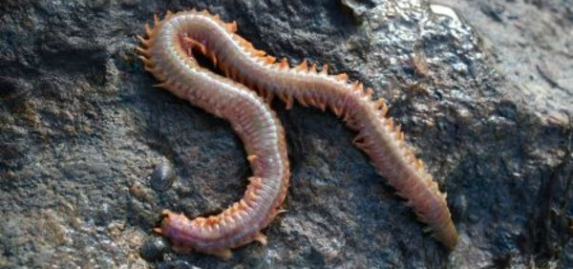
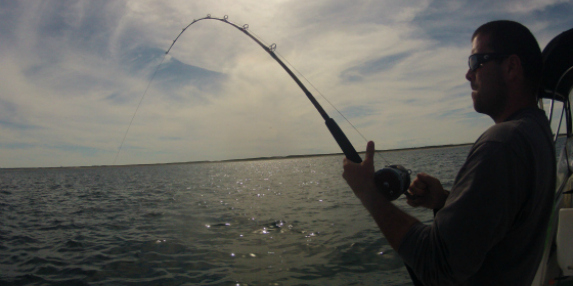
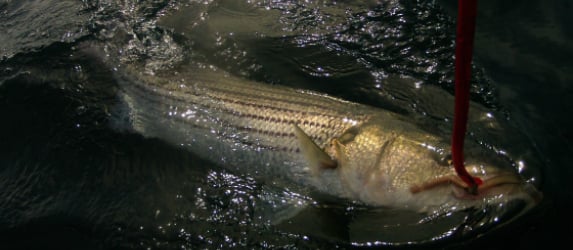
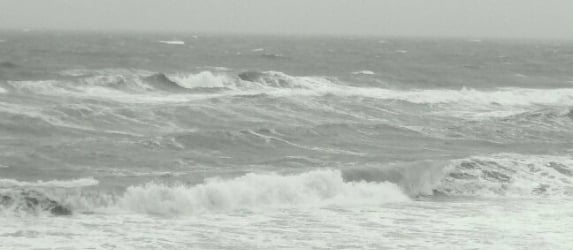
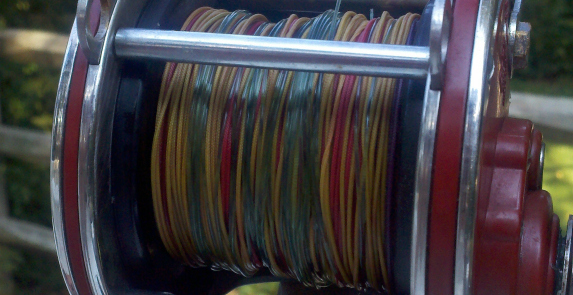



This is spot on advice from a tried and true kayak tube n wormer. I would just add that you need to make sure the hook is always covered. It makes a world of difference in the strike rate. Any bump on the bottom or tap from a fish can expose the hook and ruin your chances of a hit. Just keep checking your tube to make sure the hook is covered with worm. Also, use a weightless tube when fishing in less than 12 feet of water.
Terrific! Thanks for taking the time to share this tips Chris. I really appreciate it. 🙌🏻
Thank you for the information on fishing the tube and worm
My pleasure! Gluck if you give it a shot.
I always try to troll with the current as slow as possible, real worm and small stinger hook , caught up to 50lb’ers on the stinger
A friend suggested I put swivvles ever couple colors in my leadcore setup. He says with leadcore real easy for the line to kink up. What you think?
I have 10 colors on a 33gti and 150yds if backing.
I also have a reel with 7 colors 320 gti.
Is the ration 6 feet for 1 feet leadcore to depth.
Would it make sense to troll two tubes at different depths to test the fish?
I’ve never rigged it up with swivels like that, but it could be worth a try. I have used a swivel to connect the leadcore to my leader, and another snap swivel to connect my leader to my tube, and I have not experienced much line twist.
When using a weightless tube I have abided by the 4ft of depth to 1 color in the water. I have caught plenty of fish using this forumula, but I must admit I have never dived overboard with goggles and actually tested it out.
And yes, I will often troll two or even three tubes at different depths, and then make adjustments based on which depth the fish are biting best at. ??
Great read! Found on a Google search looking for “best color for striper tube”. I’ve been kayak fishing in RI rivers and bays for a few years now and have had great success with the T-man red tubes. Always tipped with a “troller” worm. I’m hoping to be in a center console this year and have been making my own tubes. Going with red, pink, green, black, orange, and black. Looks like red and orange will be the first ones taking a swim.
Sounds great Henry! Pumped you enjoyed this article ??
If I had to choose one tube, it would be a 20 inch red wine weightless.
Gluck! LMK how things go this season. ?
The perfect tube 19″ wine is the balls.
Don’t forget to try skinny water , especially on overcast days! We have pulled a lot of big fish in eight feet or less of water. They sit in holes along the shore waiting to cream whatever comes best! I’ve been out many times when red works best. Also many times when my buddy has done very well on orange!!!
Great tips Steven and thanks for chiming in!
Sounds like you might be fishing boulder field type areas?
I know trolling tubes in tight around boulders in places like Buzzard’s Bay and Vineyard Sound can work pretty well.
Tight lines my friend!
I too fish in water no deeper than 10 ft in the Sunken Meadow area of Wellfleet during the spring run and am never disappointed.
That’s awesome. I’ve heard the kayak guys do very well down there.
Growing up on the coast in Maine during the summers we would always troll tubes with sandworms up and down the rivers crushing schoolie sized stripers. Good tips and information, thanks for the share.
Good to know they work up and down the coast! Thanks for chiming in.
I’ll definitely will be trying the tube and worm this year.
Awesome Joe, it is a great big fish summertime technique.
Hello Ryan,
Great piece. Thanks for tip about “pumping” action.
I have been trying different types of tubes that have different action. Some tubes are straight and have little pumping action which might explain a decline in fish during past 2 years.
It will be back to basics this year… and red!
Thanks
Frank
Glad you enjoyed the article Frank!
Going back to the basics can never hurt.
I sure do love red!
Hi Ryan, I just joined this week and am having a ball reading up on all of the different subjects. You have a great thing going on.
Anyways, In the forum I had read that guys are using sand eels w/ the tube, have you given this a try? And what kind of luck did you have?
It’s great to have you onboard MFCC Kevin!
I have not ever tried sand eels with the tube, however I know they work. One guy here on the site caught a 48lber using a sand eel.
I usually stick with fresh live seaworms. They work very well.
Richard CaisseJun 11, 2014
Well done, I would like to note that I have experienced many of days when orange, black, or bubble gum tubes would be the only color that was consistent on hook-ups. Red is definitely one of my favorites. I was wondering what you used for a rod and reel when using lead core and what you use for a rod and reel off of your down riggers when tubing
Hi Rich! Yes those fish can certainly be particular about tube size and color when they want to be.
I don’t use down riggers but I do use 45 pound leadcore on a Penn 113. For rod I am using an Ugly Stik Tiger 6’6” medium action conventional rod
Many different rods will work. Here’s more info on rods I like for tubing https://myfishingcapecod.com/ugly-stick-tiger-tube-worm-trolling
“Hold On To That Magic Tube” Spot On!
I troll two off the kayak, Identical set ups. 3 to 1 on the same tube.
Pink has its moments. Can’t nail it down. When bites off I’ll troll one Wine Red, one Pink. The pink will usually draw the hits for a while. However just as the pink turned on, it will turn back off and red will turn back on. The pink will also turn on large bluefish and Weakfish over the red.
Same as you I set no hooks. I use a bit less drag on lever drag reels or would be swimming. Two things if I might add. Bait hooks I find are a must now. Head shake with thin wire hooks get thrown to easily.
Soft tubes for me out catch the thin stiffer types. On the kayak pedaling I feel everything resting hands on rods. Taps and bumps I contribute to taste and feeling. Just like the favorite tube. The soft tube will get the hook up almost every time over a stiffer tube of same color on the opposite rod.